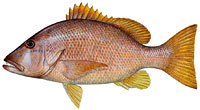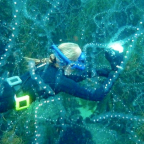
Didemnum sp.
Tunicates are a group of marine animals that spend most of their short lives attached to docks, rocks or the undersides of boats. To most people they look like small, coloured plantlike growth. It often comes as a surprise to learn that they are actually more closely related to vertebrates like ourselves, than to most other invertebrate animals.
Nothing can be seen of a vertebrate relationship in the adult animals, but the tadpole-like larva has a notochord, (a stiff rod) in its tail. After hatching, this little creature, rarely more than 5mm long, swims for a few hours to find a spot somewhere on a solid surface...
Read More












Social Profiles